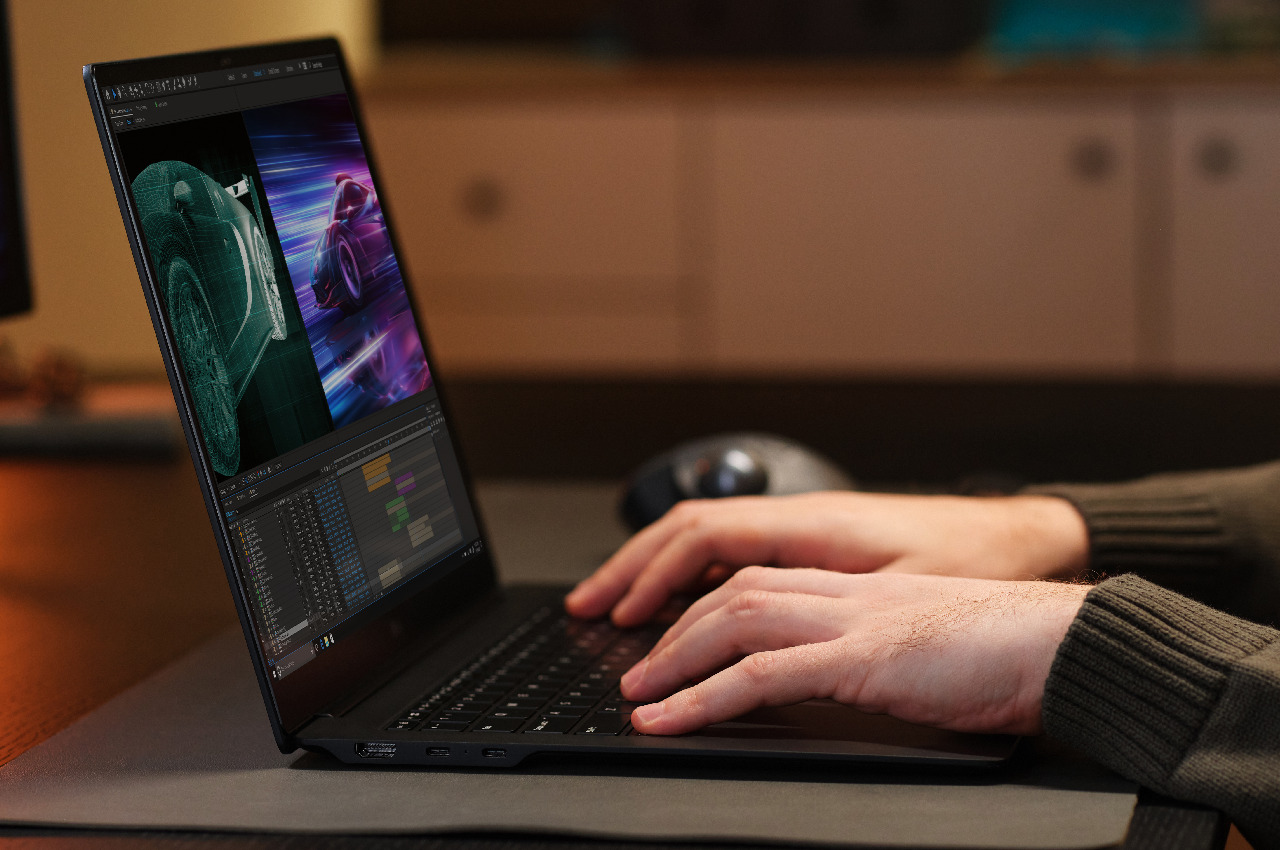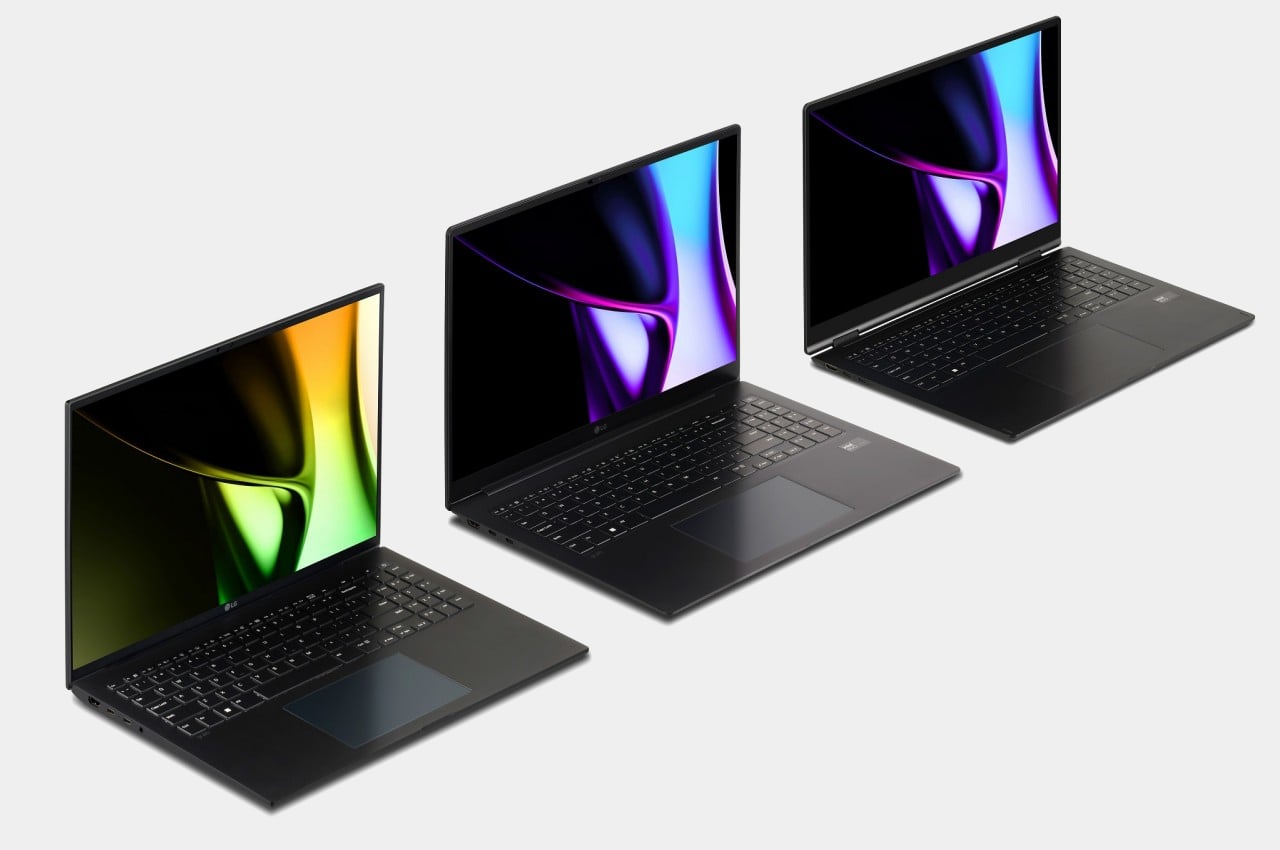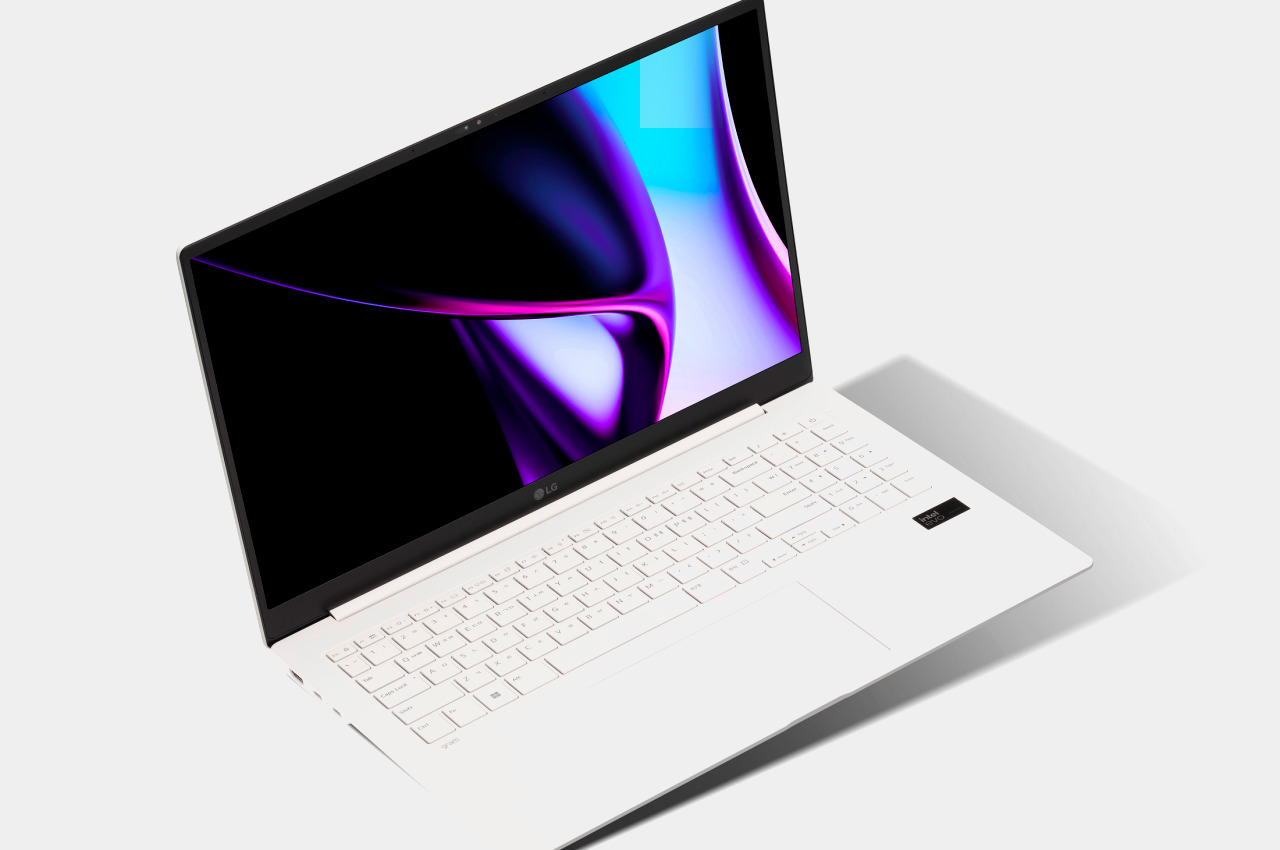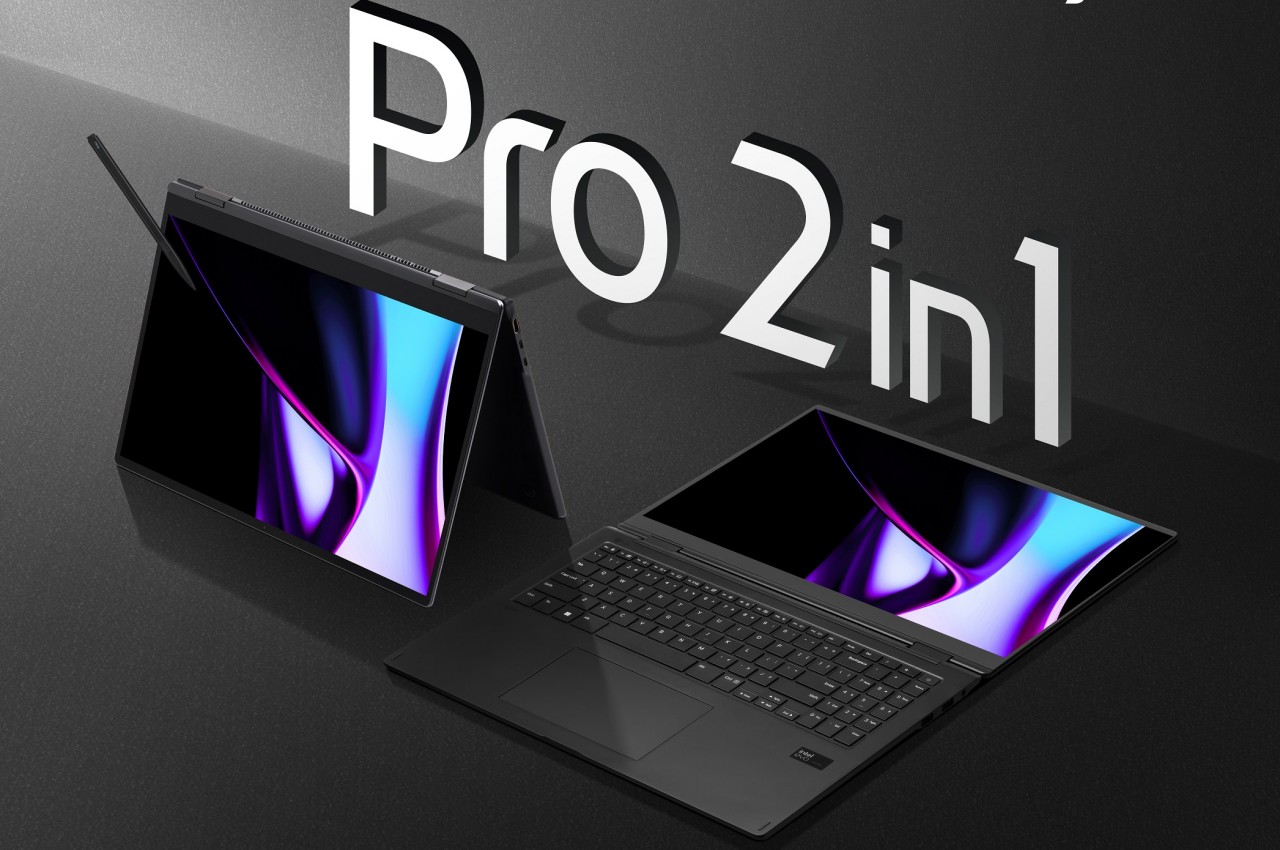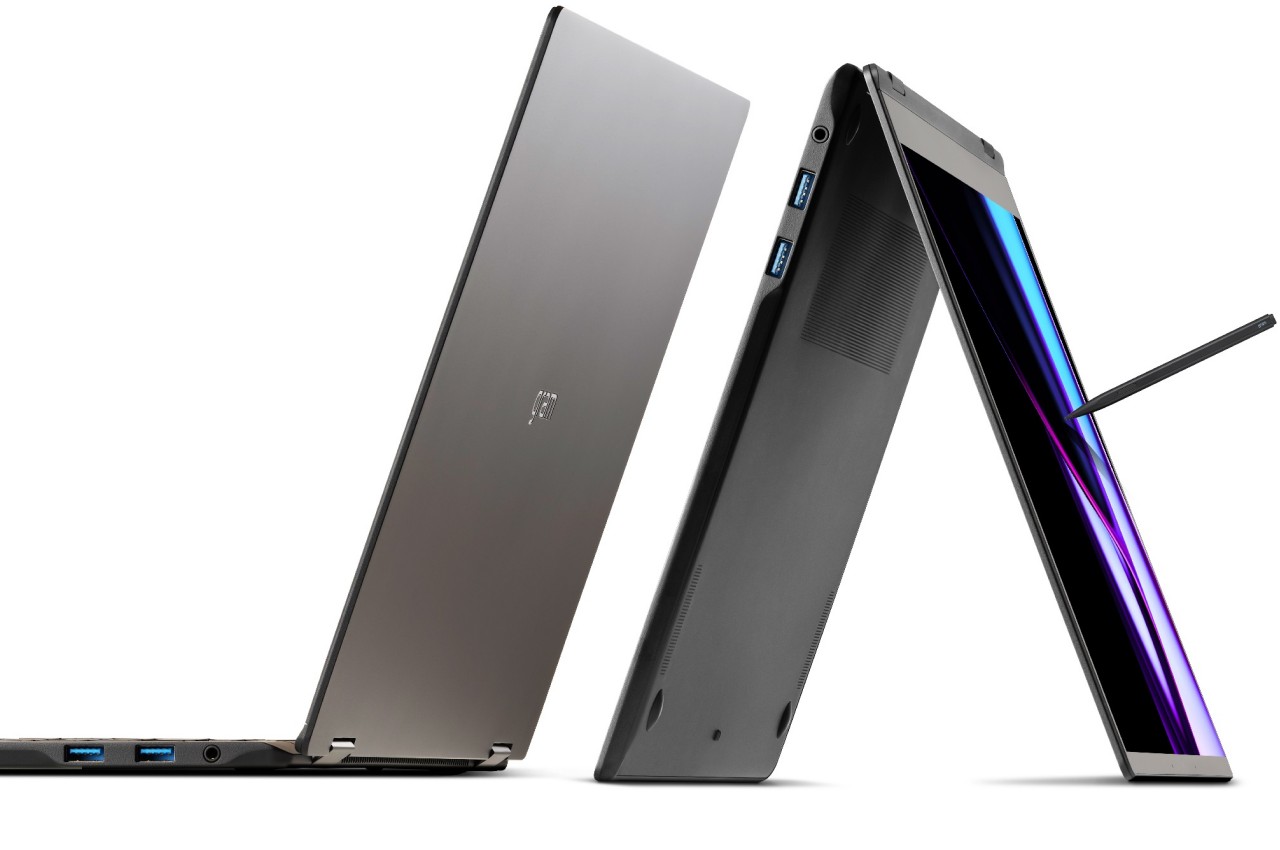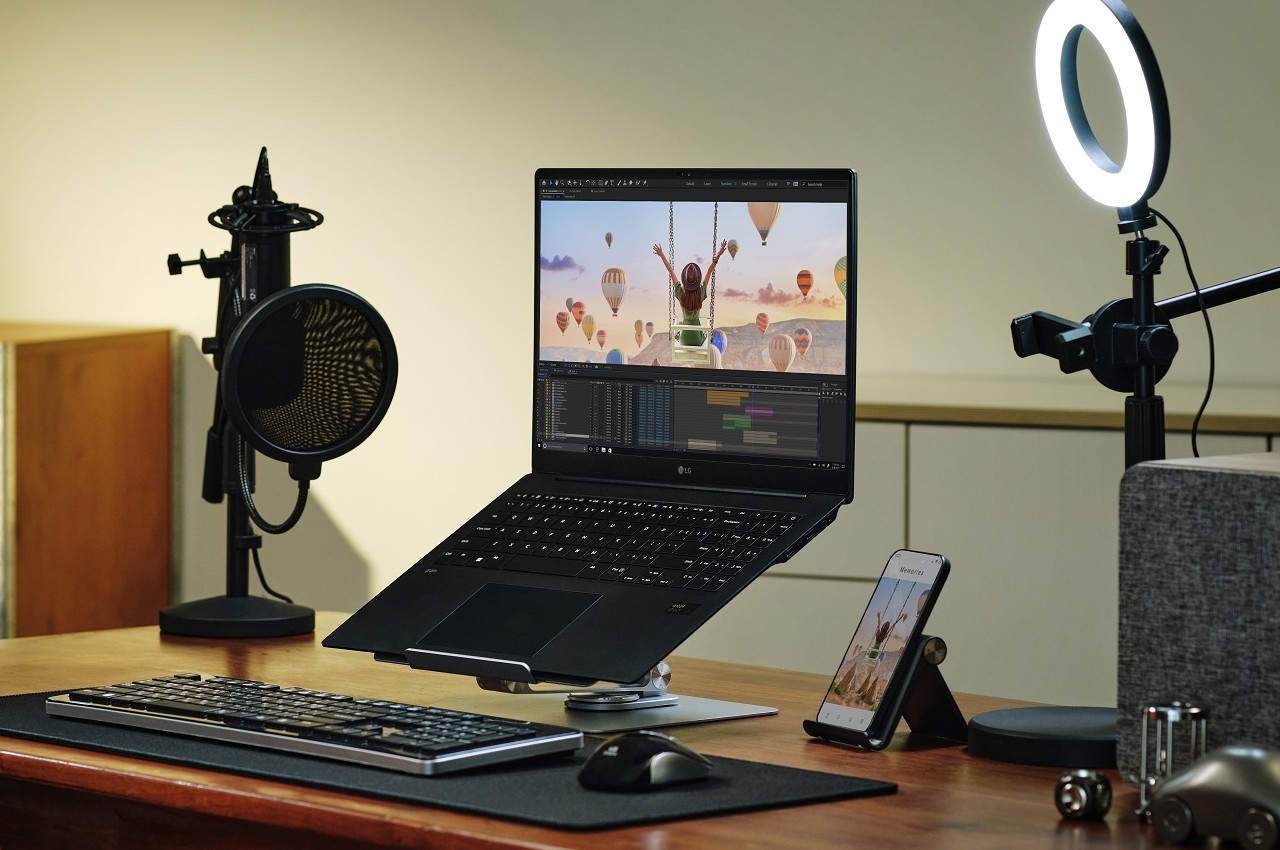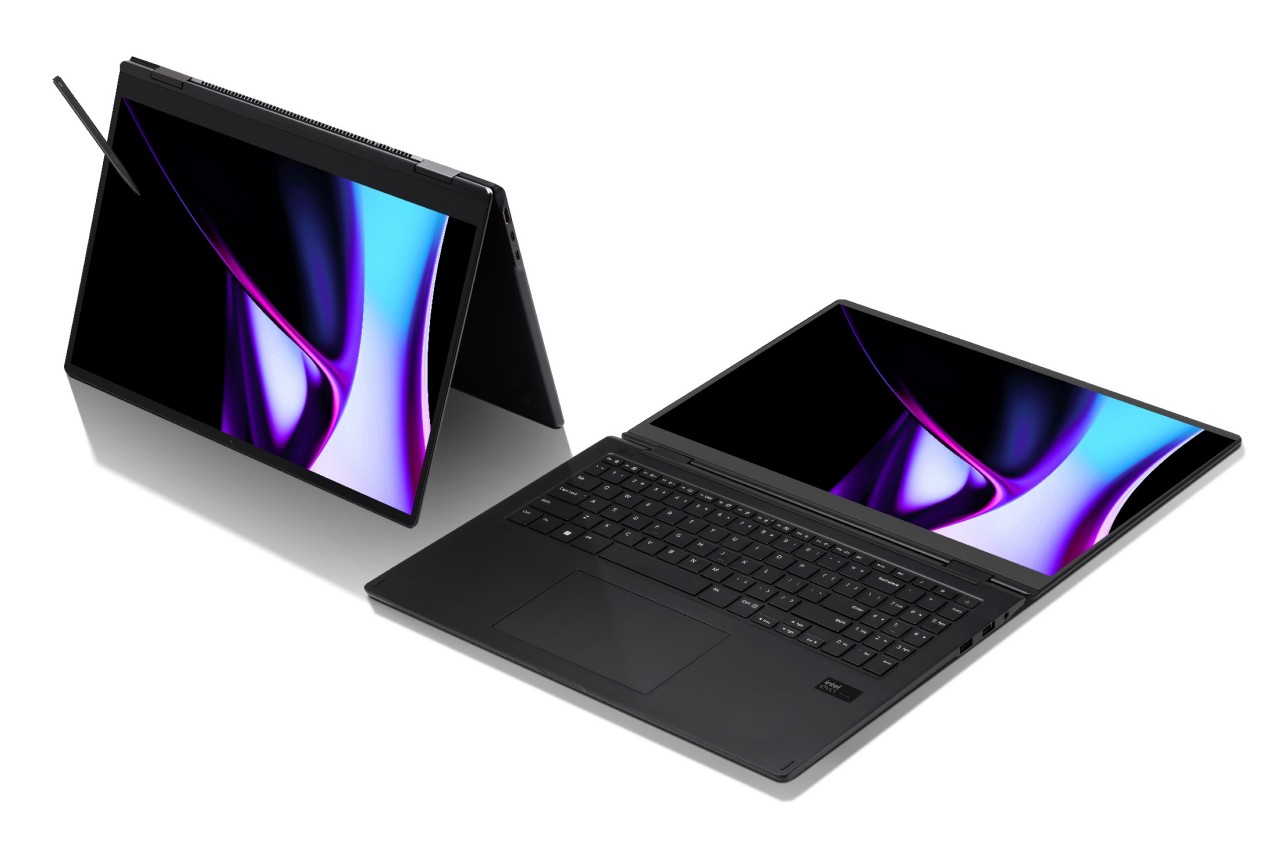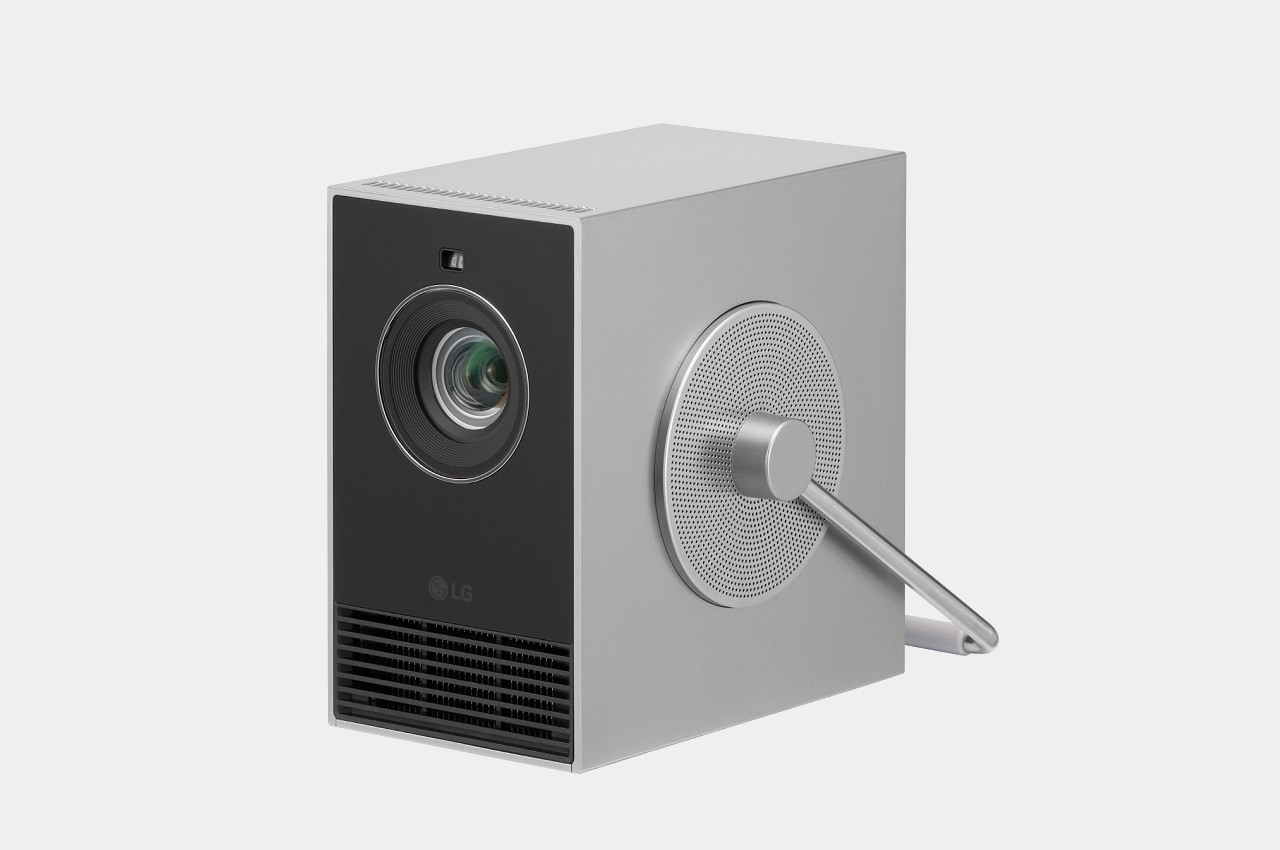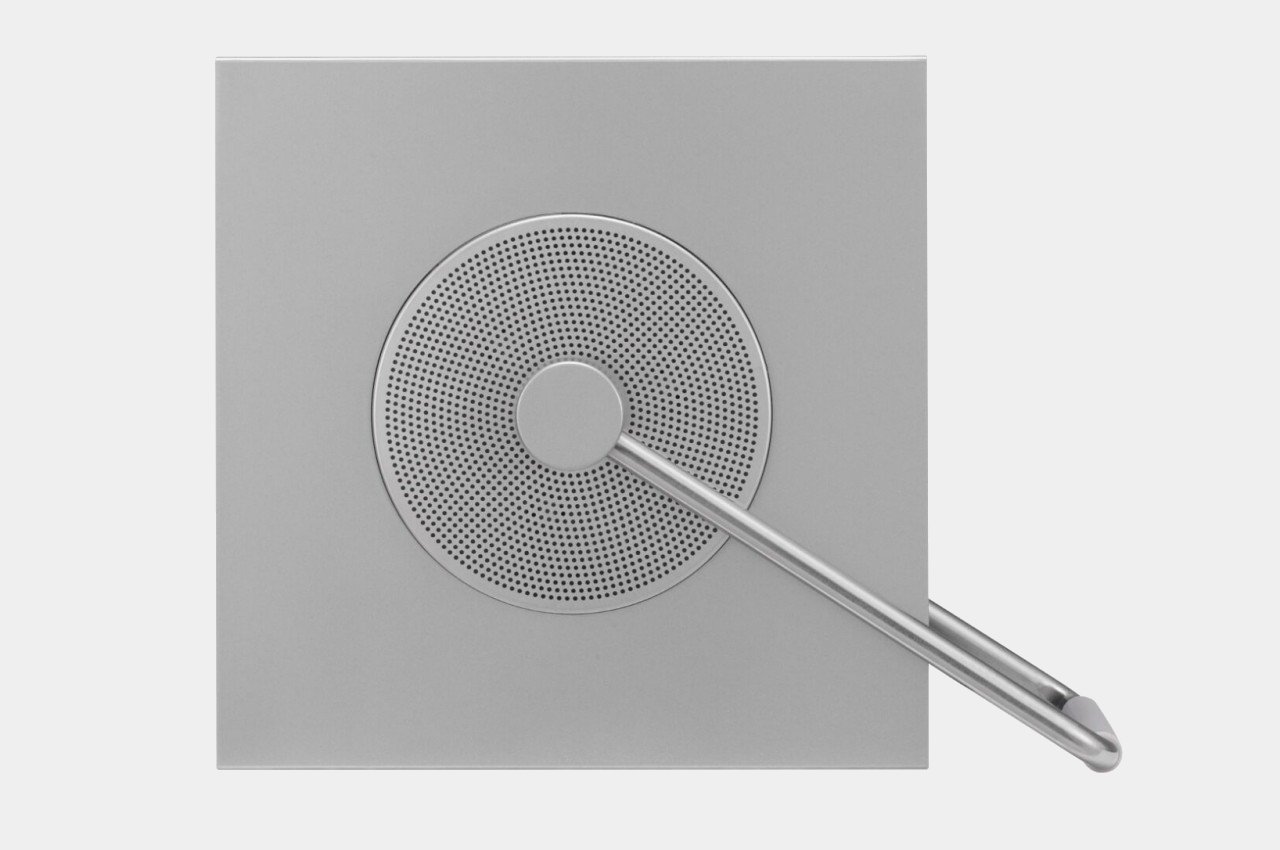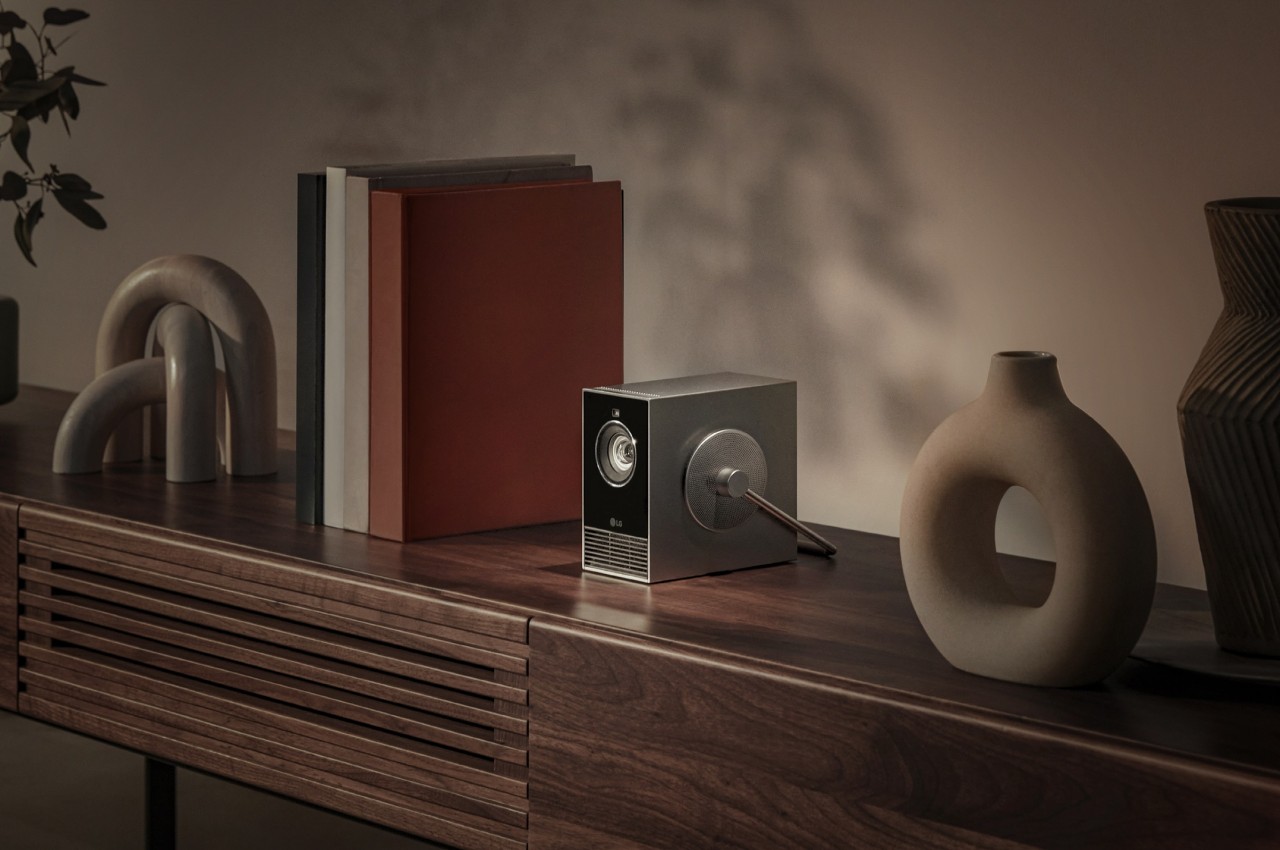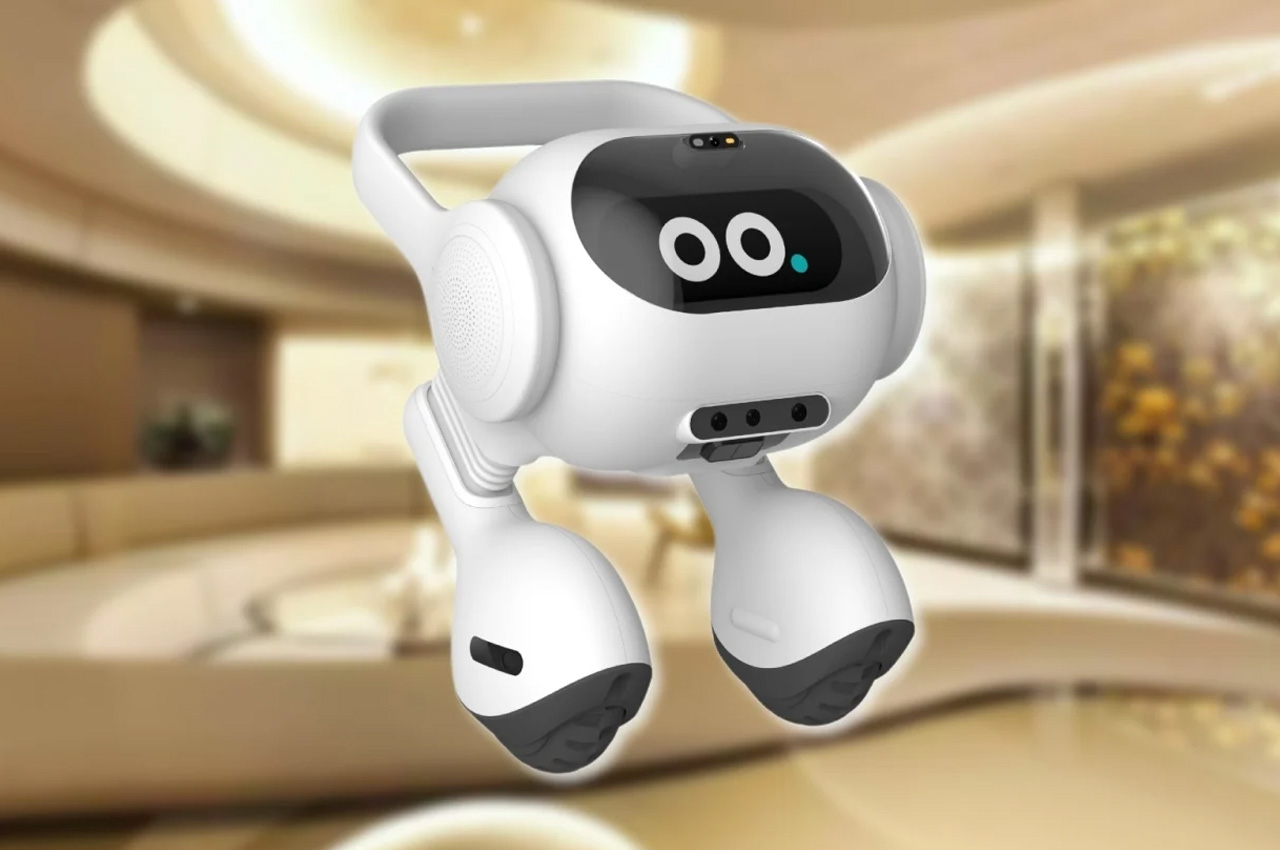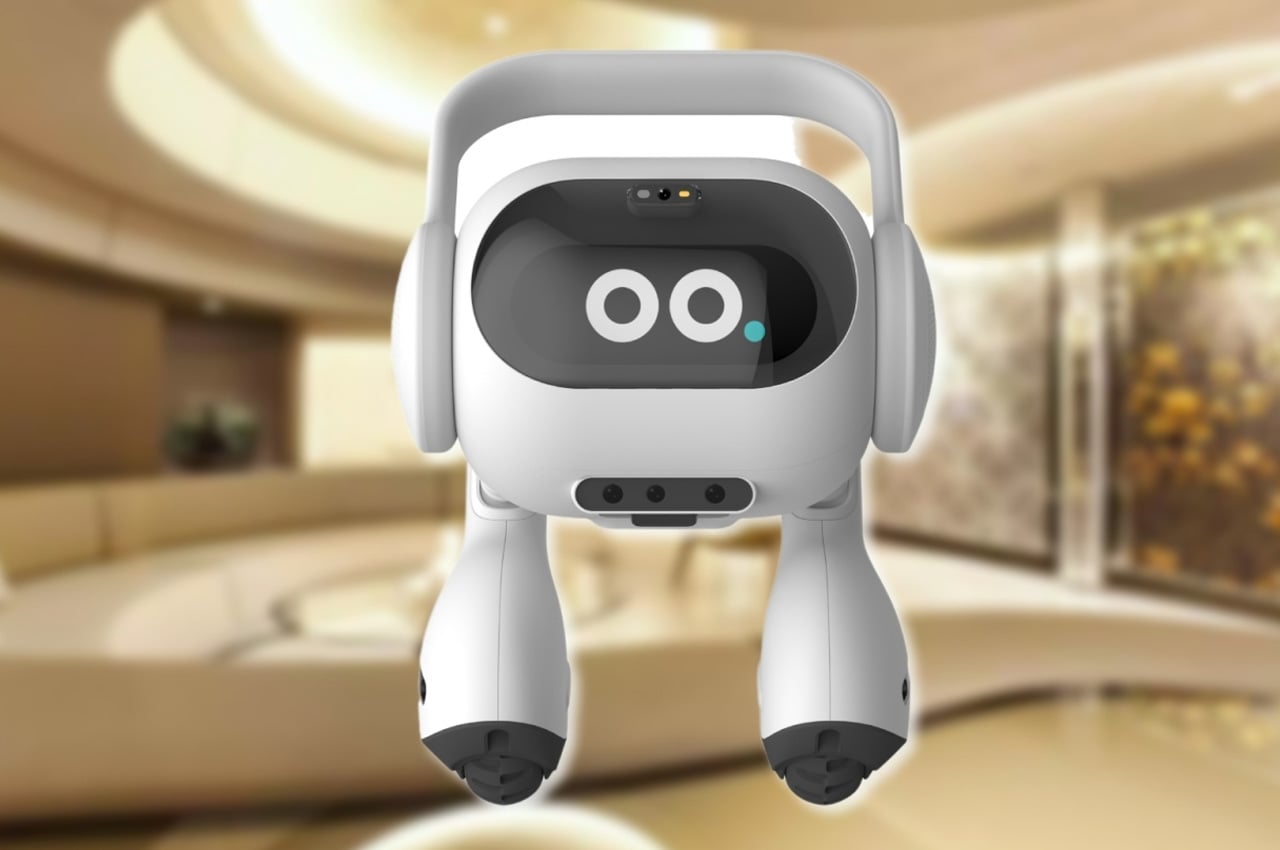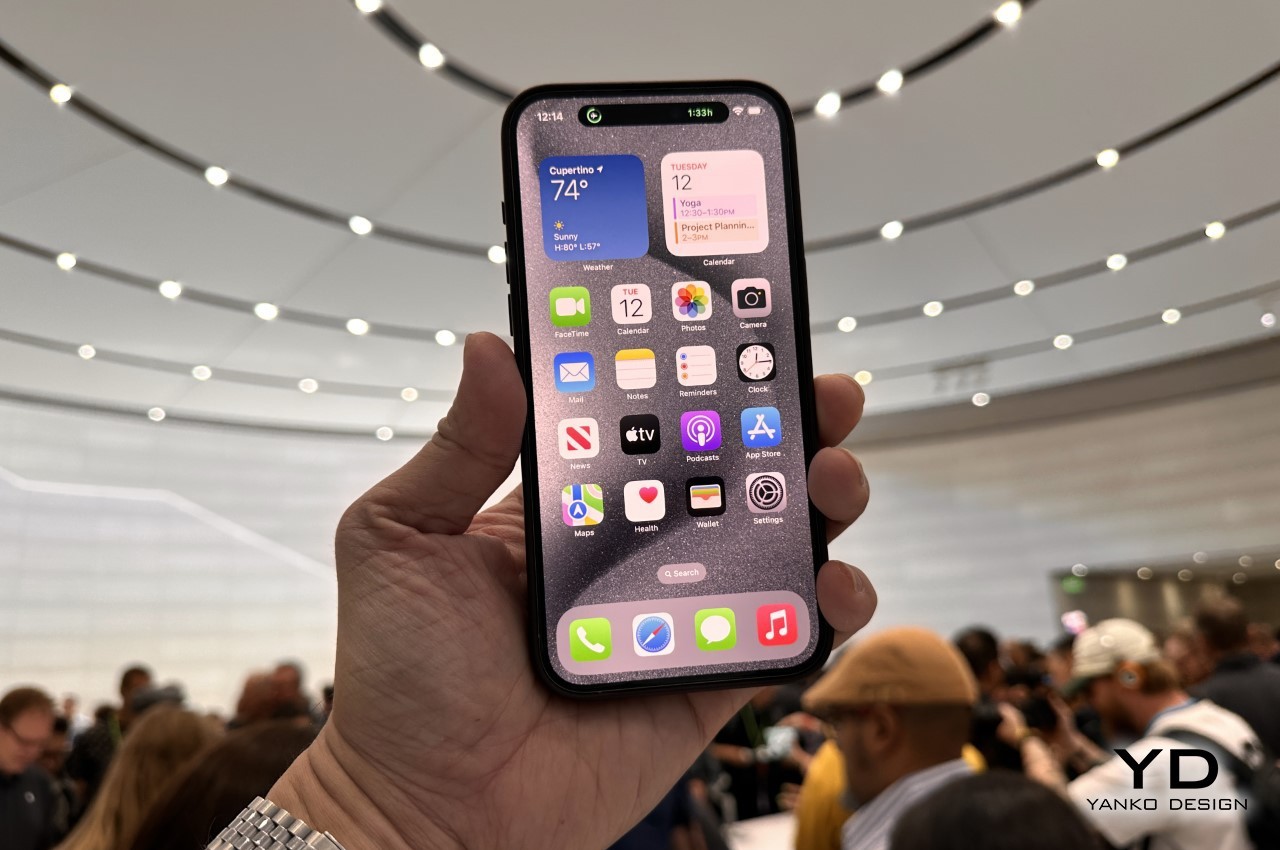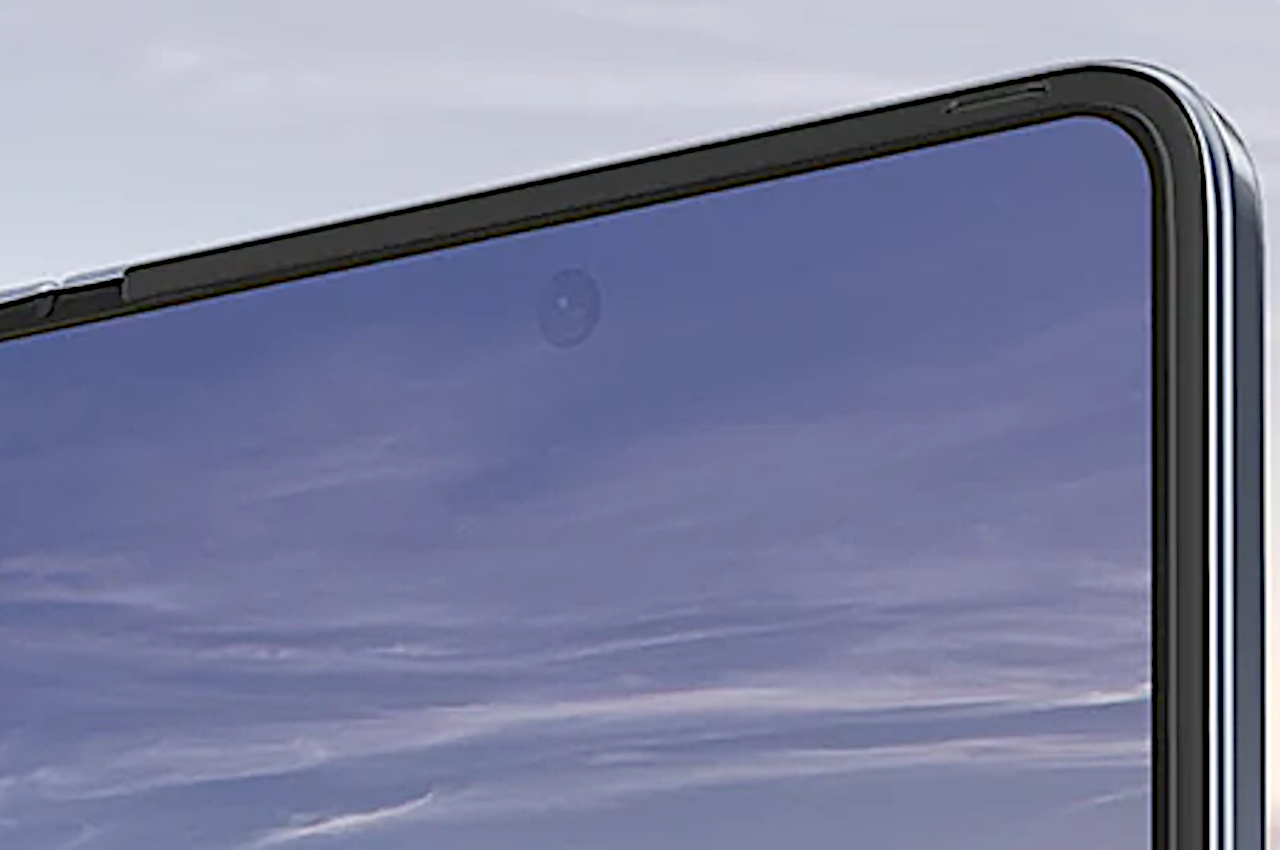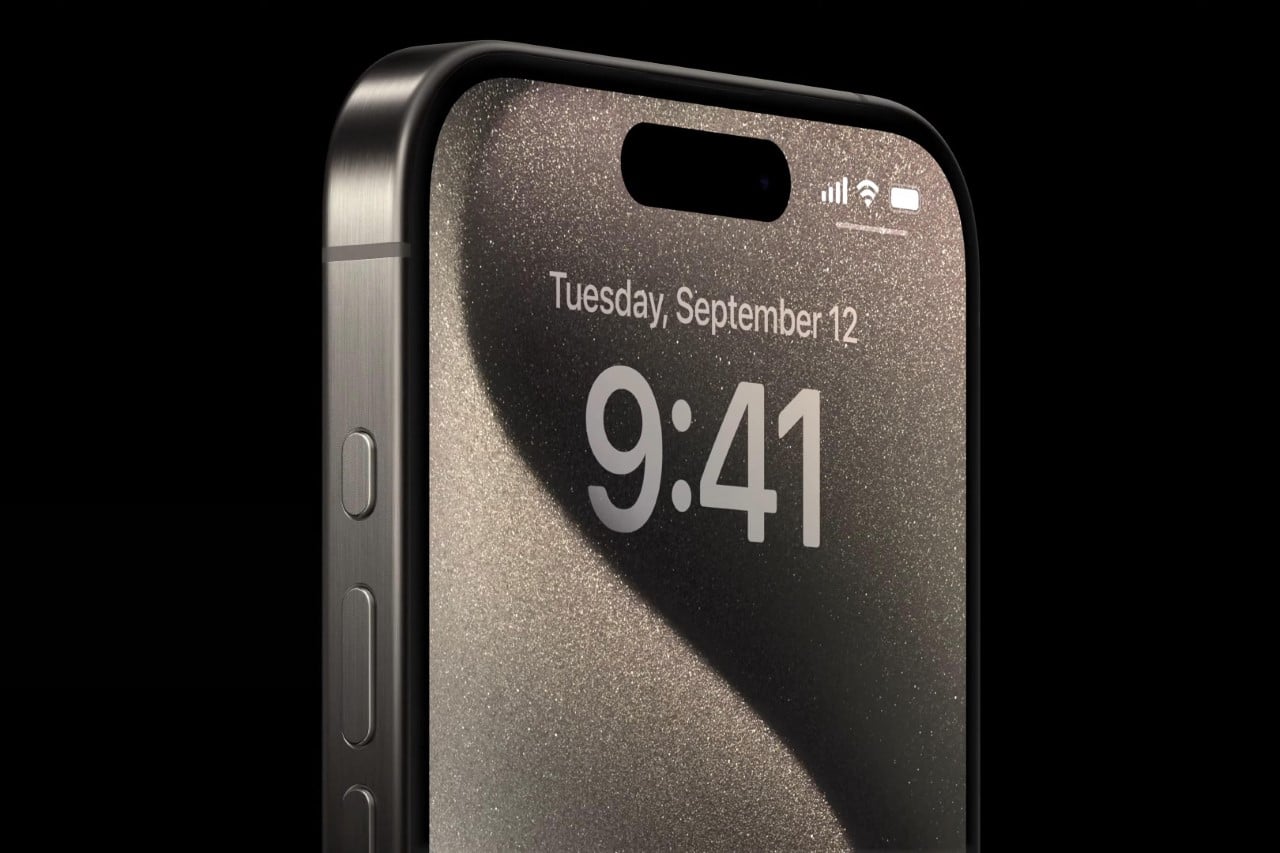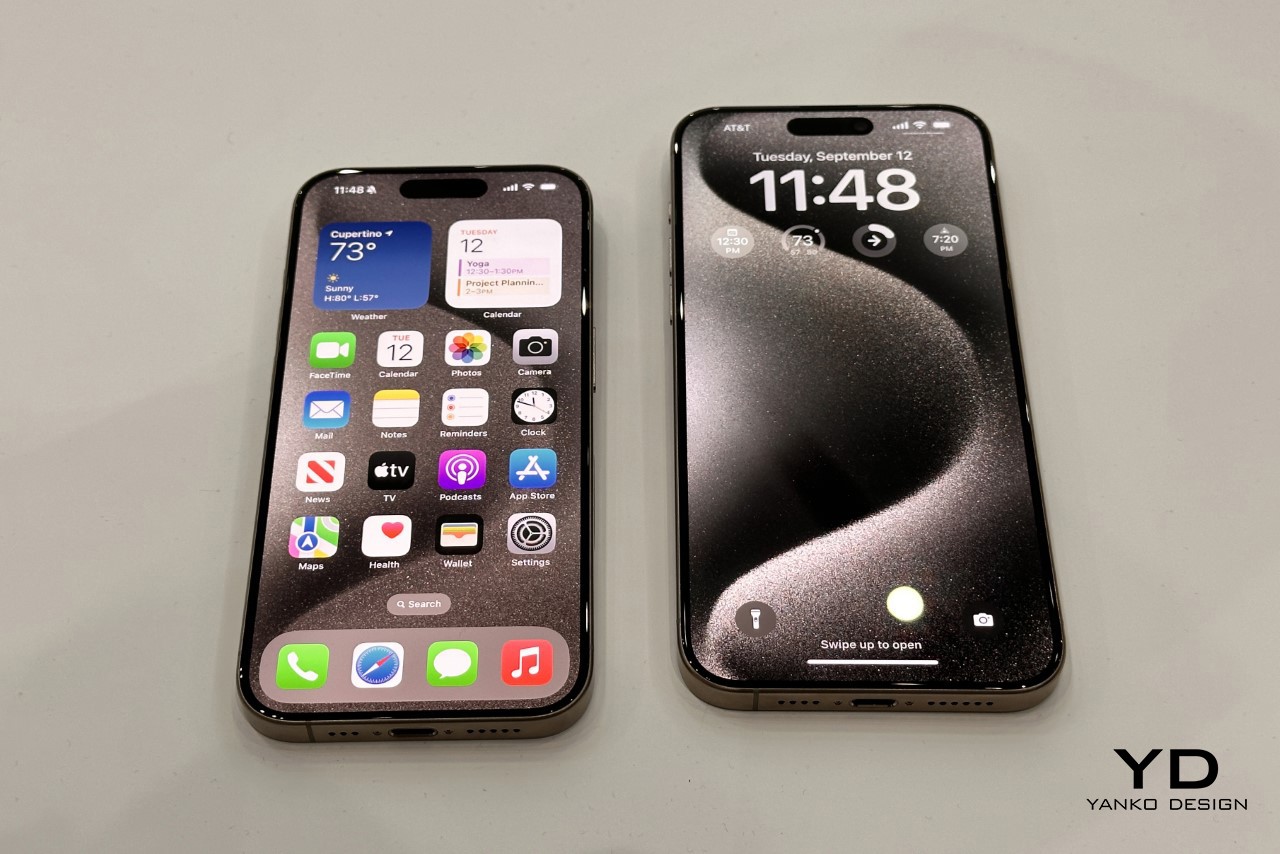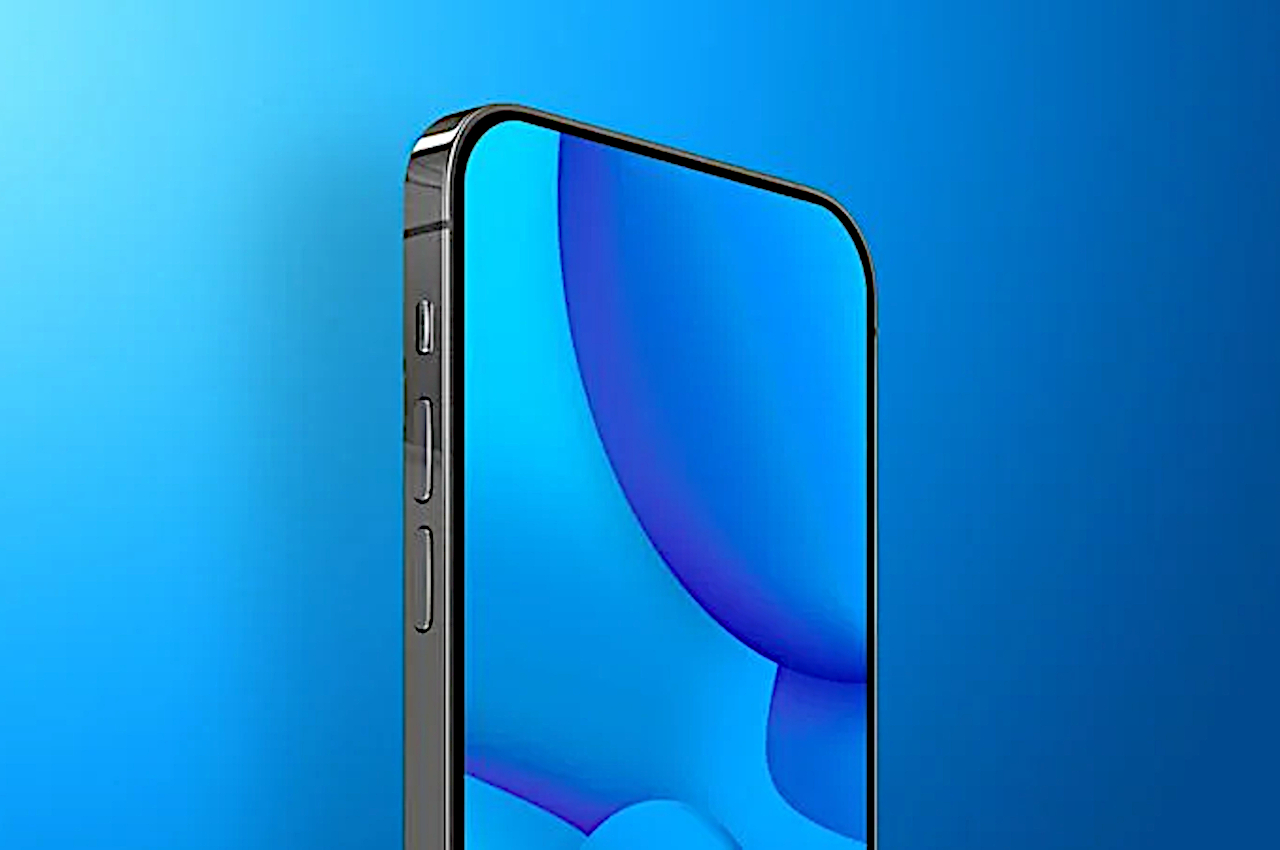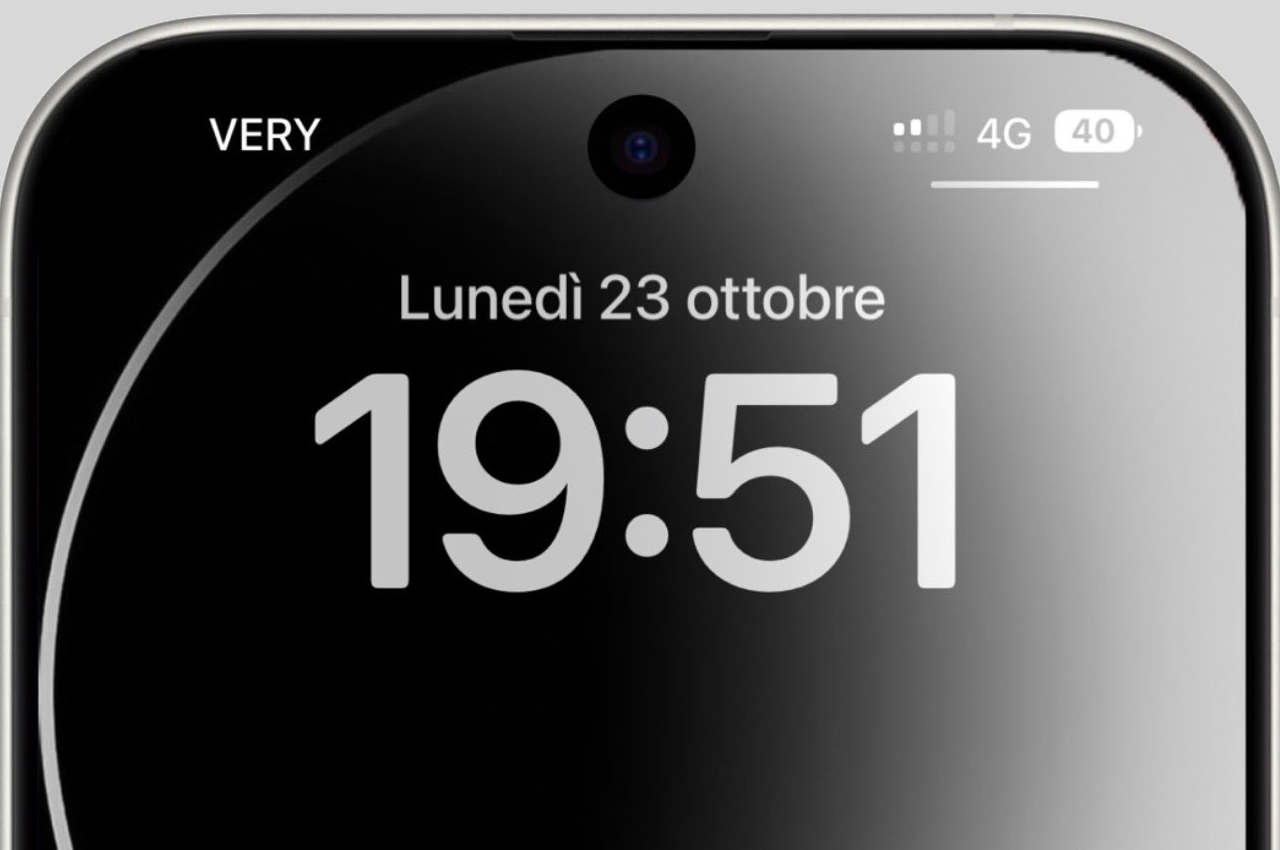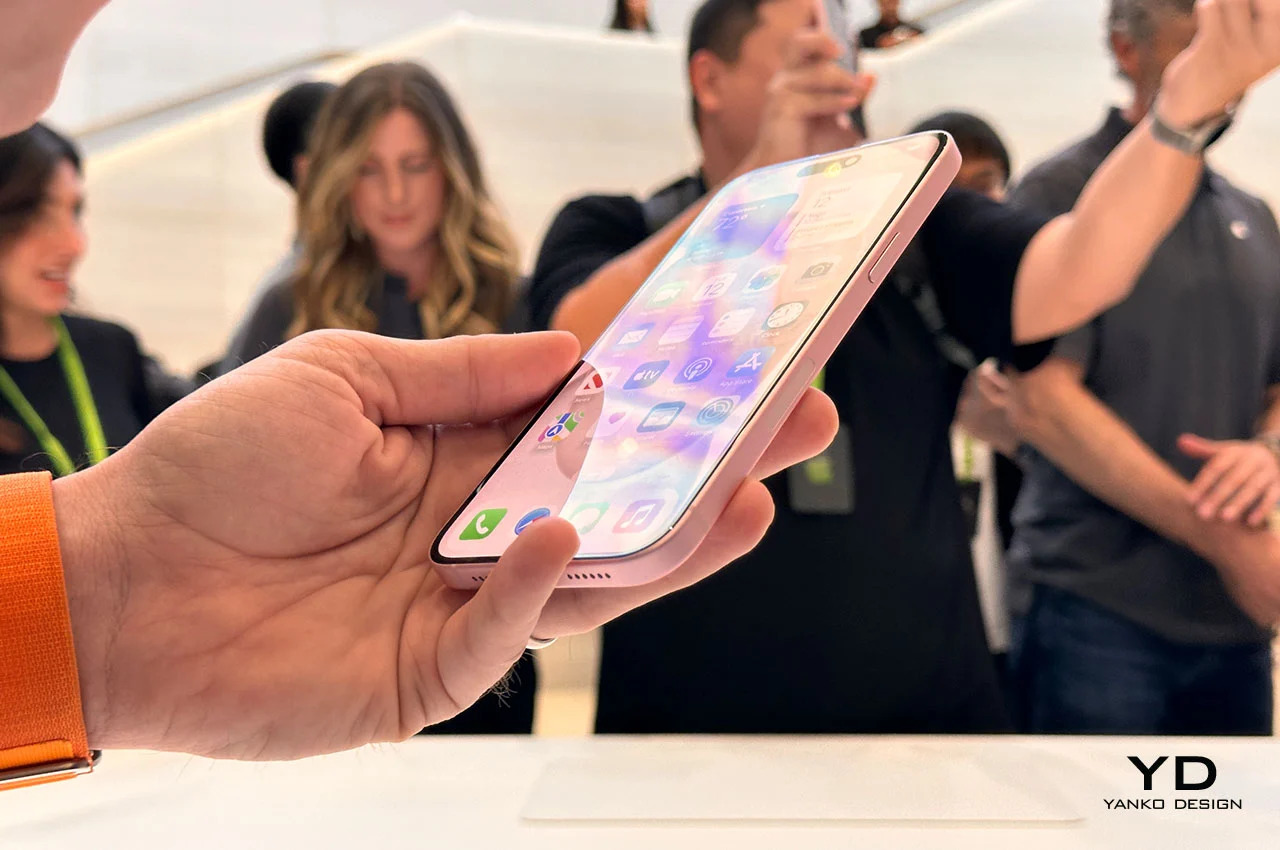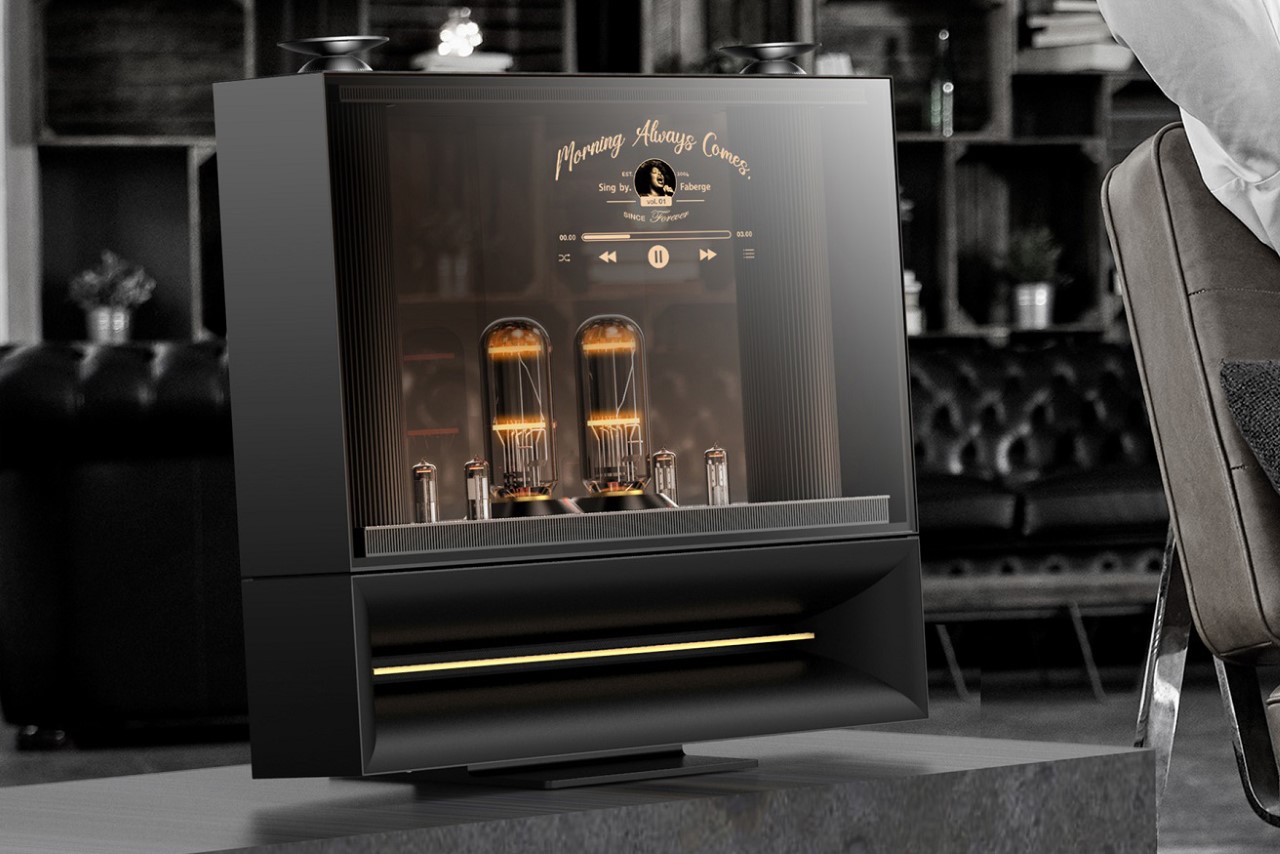
When LG isn’t making televisions that fold into briefcases, they’re working on other oddball projects like this rather eclectic jukebox that simultaneously relies on vintage vacuum tube amps for retro-style warm audio, and a transparent OLED display on the front that lets you view the album art and control playback, but also see the magical hardware behind. The DukeBox, as LG calls it, will make its grand debut at CES this year, along with other new devices that LG has been teasing in the past.
Designer: LG
The DukeBox is a unique proof of concept for a high-end speaker that rivals the likes of Devialet and B&O when it comes to building an experience around listening to music. It’s vaguely reminiscent of the Lyric Speaker from back in 2017, but instead puts a transparent screen in FRONT of the speaker’s hardware, with the ability to adjust the transparency depending on your mood. The speaker’s highlight remains the tube amplifiers encased within it, although it also boasts a large front-facing speaker at the bottom and a set of 360° tweeters on top that fill your room with booming sound. The display on the front can also be used in a variety of ways, ranging from displaying semi-transparent album art and playback information, to something a little more seasonal like a roaring fireplace. There’s no word on the DukeBox’s pricing, although if LG plans on selling it, expect this retrofuturistic audiophile’s dream to cost a pretty penny.
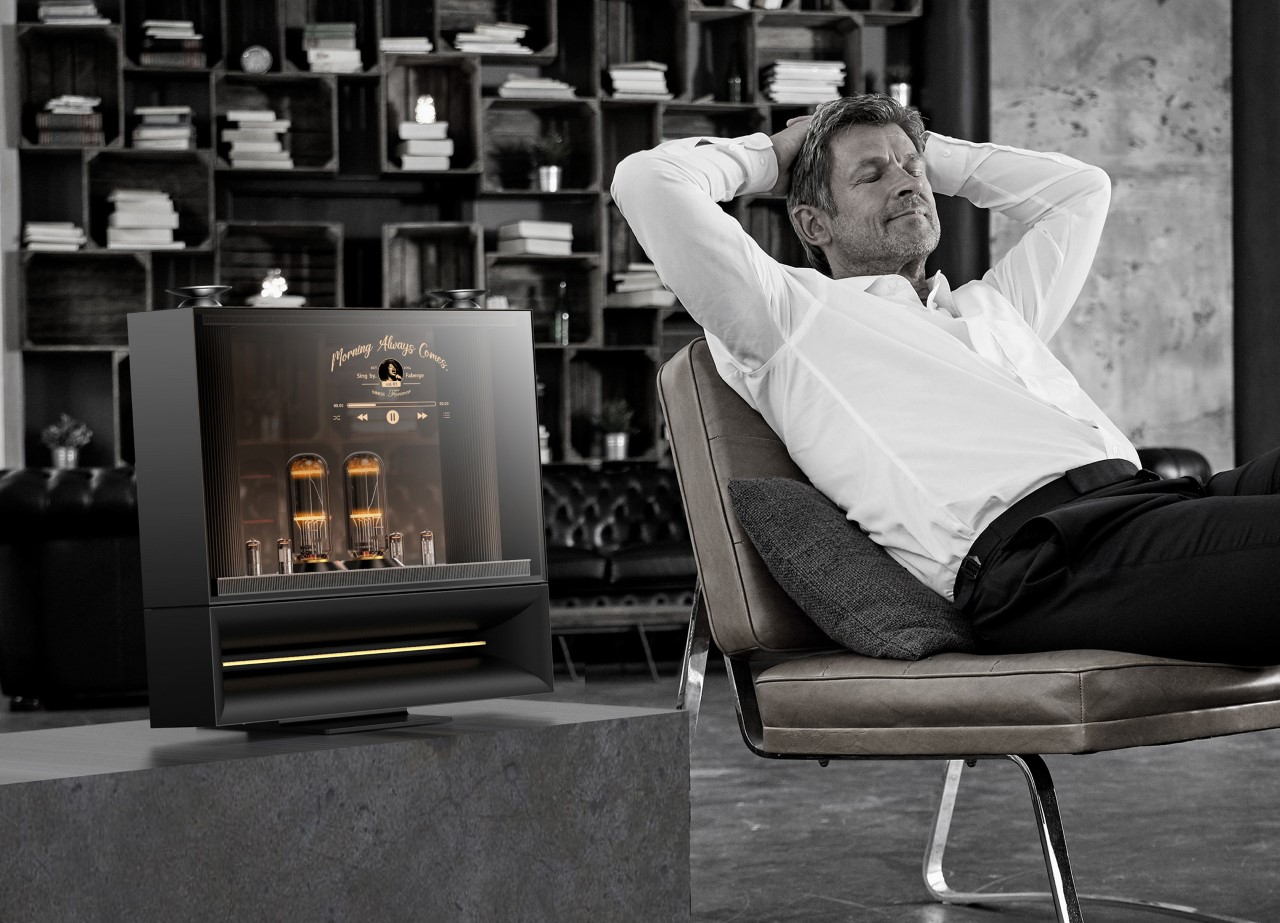
Image Credits: LG
The post LG unveils Retrofuturistic Jukebox at CES 2024 with tube amplifiers and a transparent OLED display first appeared on Yanko Design.
